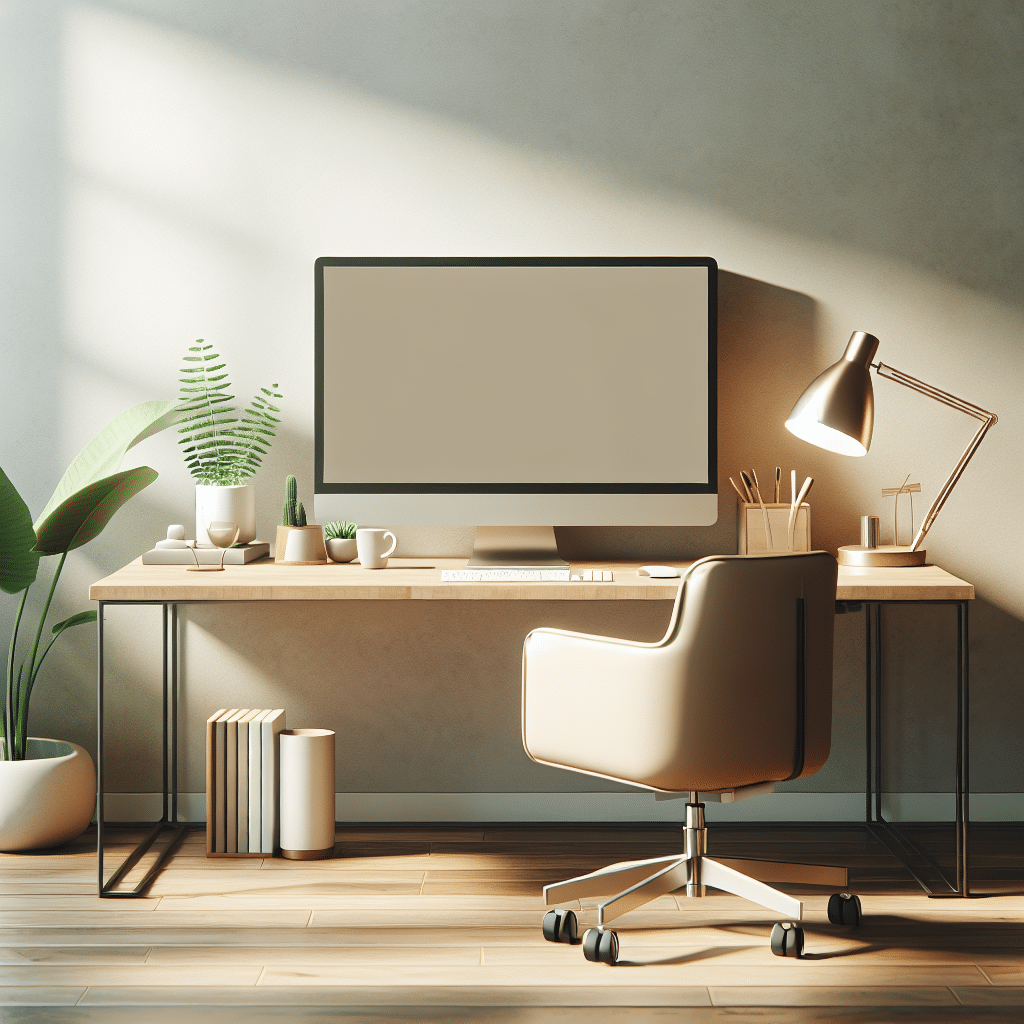The Power of a Minimalist Desk for Enhanced Focus
Understanding Minimalism
Minimalism is more than just a design choice; it’s a lifestyle philosophy aimed at reducing distractions and enhancing productivity. By embracing a minimalist approach to your workspace, particularly your desk, you can foster an environment that promotes focus and efficiency. The essence of minimalism lies in removing the unnecessary to make room for the essential.
Declutter Your Desk Space
The first step in creating a minimalist desk is decluttering. A cluttered workspace can overwhelm your senses, leading to decreased concentration and productivity. Start by removing everything from your desk and evaluating each item based on its necessity. Keep only essential tools such as a computer, monitor, writing instruments, and perhaps a planner.
Tip: Use storage solutions like drawers or boxes to store items that are not frequently used but are still essential. This keeps your desk surface clean and visually appealing.
Optimize Desk Layout
Once you have decluttered, focus on the layout of your desk. The arrangement of your workspace plays a crucial role in your ability to concentrate. Position your computer monitor at eye level to prevent neck strain and to promote better posture. Place frequently used items within arm’s reach to minimize interruptions and distractions when you need to grab something slight.
Ergonomics Consideration: Ensure your chair and desk combination promotes good ergonomics, allowing you to work comfortably for extended periods.
Choose Functional Items Wisely
Opt for multifunctional items when selecting desk accessories. For instance, a sleek pen holder can double as a paperweight, while a minimalist clock can keep time without adding clutter. Moreover, select tools that serve specific purposes and avoid decorative objects that do not provide utility. This functional approach helps keep your mind focused on tasks rather than on distractions.
Limit Digital Distractions
In our hyper-connected world, digital distractions can have an enormous impact on our ability to remain focused. Begin by utilizing focus-enhancing applications that block distracting websites and notifications. Turn off non-essential notifications on your devices and consider using the “Do Not Disturb” mode during dedicated work times.
Digital Tidiness: Organize your desktop applications with folders and remove any unused files and shortcuts. A clean digital workspace can mirror the physical minimalist environment you’ve created, leading to a more focused mindset.
Create a Calming Ambiance
Your environment plays a critical role in how effectively you can concentrate. A minimalist desk adheres to the principle of simplicity in design, promoting a serene atmosphere. Use neutral colors that soothe the mind. Consider white, beige, or light grays for your desk materials.
Lighting: Natural light is best; however, if that’s not an option, invest in quality soft white LED lights to avoid harsh glares and create a warm, inviting workspace. Additionally, incorporate a small plant, such as a succulent, to enhance the air quality and add a touch of nature without cluttering the space.
Set Clear Boundaries
One of the advantages of having a minimalist desk is the ability to set clear boundaries between work and leisure. If your workspace is tidy and efficient, you’re less likely to find distractions that draw your attention away from your tasks. Define your work hours explicitly — whether it’s an eight-hour office job or freelance gigs.
Scheduled Breaks: Implement a system for scheduled breaks to refresh your mind. Short, frequent breaks can prevent burnout and help maintain high levels of focus throughout the day.
Mindfulness and Focus
Incorporate mindfulness practices into your daily routine. Meditation and deep-breathing exercises, when done regularly, can sharpen your focus. Dedicate a few minutes in your day to practice these techniques in your serene workspace.
Mindful Moments: Before starting work, take a few seconds to center yourself. Focus on your breath, clear your mind, and set your intentions for the day. This sets the tone for a focused and productive work session.
The Role of Organization in Minimalism
A minimalist desk thrives on organization. Investing in organizational tools such as cable management systems, drawer dividers, or wall-mounted shelves can help keep your workspace tidy without compromising its minimalist ethos. These tools help maintain the visual appeal and functionality of your workspace, allowing total concentration on your tasks.
The One In, One Out Rule: Each time you think about adding something to your desk, consider removing an item of equal size or importance. This practice helps maintain your minimalist approach while ensuring that your workspace doesn’t become cluttered over time.
Use Technology to Your Advantage
Technology can help streamline workflows but can also add to distractions. Leverage tools designed for productivity, such as task management software or note-taking apps, to keep your tasks organized. The key is to choose technology that enhances focus rather than overwhelms.
Effective Use of Tools: Explore productivity techniques like the Pomodoro Technique, where you work for 25 minutes and take a 5-minute break. Use a timer app on your phone, keeping the rest of your phone out of sight.
The Impact of Minimalist Principles
Ultimately, embracing a minimalist desk is about cultivating a space that reflects clarity and focus. This approach not only fosters productivity but also promotes a balanced state of mind conducive to creative thinking and problem-solving. As distractions are minimized, the ability to concentrate on tasks improves, creating an environment ripe for innovation and efficiency.
A minimalist workspace embodies the principles of simplicity, functionality, and serenity, encouraging a profound impact on overall productivity and mental clarity. Regular reevaluation of your desk setup ensures that it remains aligned with your goals, allowing perpetual enhancement in your focus and work output.
